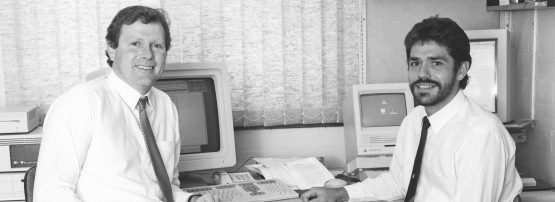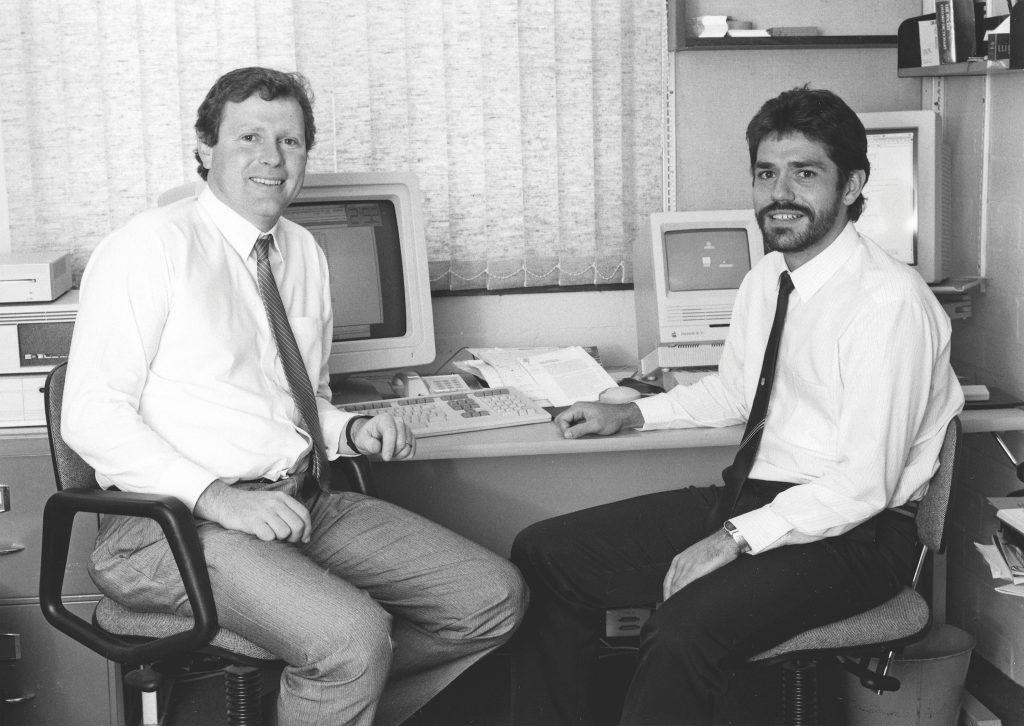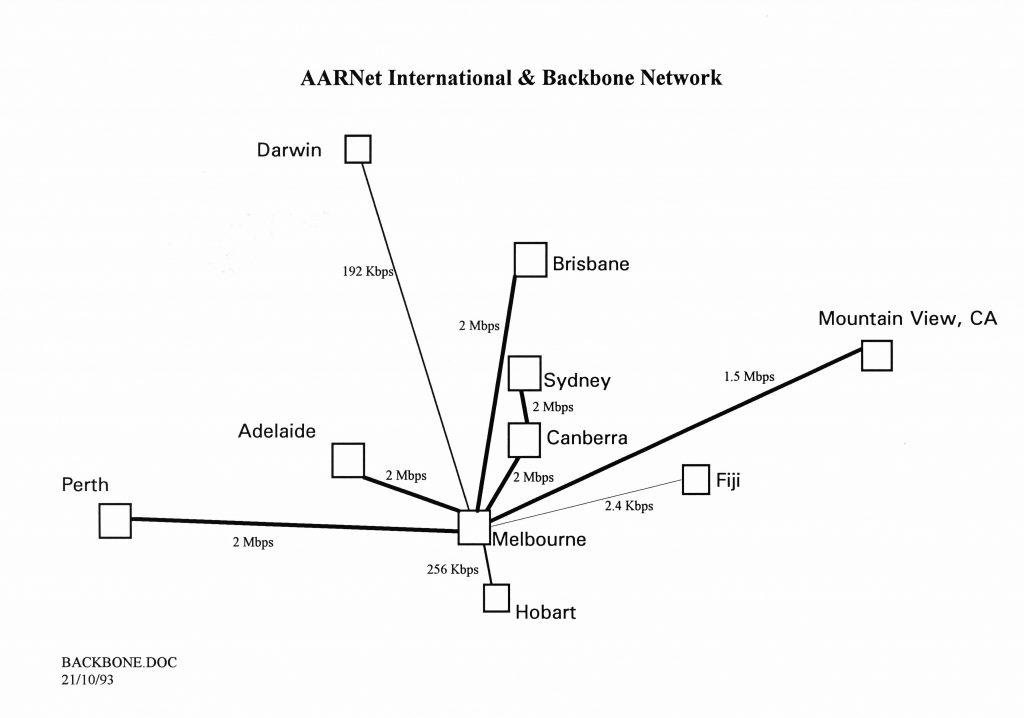
The origin of the Internet for Australia echos that of many economies and is a story of a collective and communal effort.
Researchers discover the Internet. Ask their university to get a connection to the Internet so they can collaborate more efficiently with national and international partners. University sees benefits in new means to instantly communicate and share data and tries to connect but there is no Internet to connect too yet. So, universities collaborate with each other to support their researchers and their own IT personnel to organize an international connection and develop a local network themselves.
In the case of Australia, the result of the above was the Australian Academic Research Network (AARNet), which for more than 30 years, has provided Internet services to the Australian education and research communities and their research partners, and in the process fostered Australia’s Internet network as a whole.
With APRICOT 2020 being hosted in Australia’s second-largest city, Melbourne, we thought it fitting that we ask the second employee of AARNet, Peter Elford, to take us back to the beginning, when he and his colleague, employee number one, Geoff Huston, rolled out Australia’s first Internet backbone.
Multi-protocol technology provides blueprint for network
AARNet was formed in 1989 by the Australian Vice-Chancellors’ Committee (AVCC) following almost a decade of discussions among the Australian networking community as to what such a network would look like and how it would be managed.
A primary sticking point to these discussions, remembers Peter, was choosing a preferred technology. “Networking back in the 80s was very much a proprietary technology. If you had an IBM mainframe, you had IBM networking. If you had VAX/VMS computers, you’d use DECnet. If you had Apple devices, you’d use AppleTalk. There was a different networking protocol for every brand of computer.”

Because of this, small clusters of universities had already invested in and developed their own campus networks using a range of systems — the most prominent ACSnet (developed at the University of Sydney) and SPEARnet (led by the University of Queensland) — which they were putting forward to be the basis of the initial technical architectures for the national network.
The resolution was finally achieved in December 1988 during a ‘Networkshop’ — social forums established by the networking community to share insights and experience with new technologies they were using — during which Peter remembers Geoff presenting a new multi-protocol approach he’d identified, based on Ethernet switches and multiple routers.
“He came up with a simple idea of how we could make it work with TCP/IP, DECnet, X.25 and OSI that got broad acceptance from the community,” says Peter. “The addition of TCP/IP was the key, as Geoff and others who didn’t have a preconceived preference recognized its potential to become ‘the’ protocol in any future Internet.”
In AARNet — 20 Years of the Internet in Australia, Geoff credits Professor Ken McKinnon, the Vice Chancellor of the University of Wollongong and major proponent of AARNet, for encouraging him to push the case for TCP/IP to be the preferred protocol on the new network due to its use in the US, particularly ARPANET.
“He [McKinnon] … had a strong preference for using the systems which had been used in the US. The only thing he really wanted to hear was how to do what the Americans were doing – only better.”
Shortly after, Geoff was employed by the Australian Vice-Chancellors Committee (AVCC, now Universities Australia) to work on the design and implementation of the proposed network, which would become known later as the AARNet, with Peter joining him in 1989 to assist with rolling out the Internet in Australia.
Building an Internet in six weeks
Politics and funding aside, Peter remembers deploying the network as being “very straightforward”.
“It was a pretty simple delegation of duties: Is Geoff doing it? No. Then I guess I must be doing it,” remembers Peter.
“My first job was to order a bunch of Cisco routers, which I’d never seen or really heard about before,” recalls Peter adding how the venture capitalists backing the upstart Cisco had even flown out to Australia to close the deal. “Once the boxes arrived, we configured them and then Geoff and I divided up Australia to go and plug them in and turn them on. All up it took about six weeks!”

The initial regional hub sites were located at the Australian National University, the University of Melbourne, the University of Sydney, the University of Queensland, the University of Adelaide and the University of Western Australia. The University of Tasmania and Northern Territory University (now Charles Darwin University) linked directly to Melbourne. The decision to locate the backbone hub at the University of Melbourne was made because of its existing connection to the US.
“The technical challenges were mainly naïvity. We could read the manual, configure it, make it work. But the first time some other device came up on the network and claimed to be a network route to the rest of the world, the whole network believed it, and it was like, ‘Oh, we need to put in a level of filtering as bad things can and do happen in the world.’”
“The hardest thing was accommodating the unbelievable growth, not just within the university sector, but external organizations (affiliate members as they were known, first government departments then the first ISPs) were also wanting to connect to the network. Much of this had to do with the affordability of the leased lines — running the Internet in Australia, for as many as two to three decades, was completely dominated by the cost of international bandwidth back to the rest of the world.”
The most impressive thing for me about the whole journey was the collective and communal effort
Although Peter left AARNet in 1993, the work he and Geoff did in the foundational years to develop what was Australia’s first national network is still considered as fundamental to the way not only AARNet but the Internet is run in Australia today, an achievement of the community rather than the individuals in Peter’s eyes.
“The most impressive thing for me about the whole journey was the collective and communal effort of it all, most voluntary,” says Peter. “If it wasn’t for all the supporters in the first place to get everyone on the same page and find the money, and then the support of the IT networking nerds in all the universities, who were our arms and legs in all of the state-based hubs, it would have not been possible.”
“Models like AARNET show that it is possible to not only deploy and maintain a network across such a big landmass with such a small population but also continue to re-invest to provide ultra-high-speed, ultra-low bandwidth, ultra-high quality broadband services for the universities and the broader research and education sector.”
To learn more about the history of the Internet in Australia, read AARNet – 20 Years of the Internet in Australia.
The views expressed by the authors of this blog are their own and do not necessarily reflect the views of APNIC. Please note a Code of Conduct applies to this blog.

